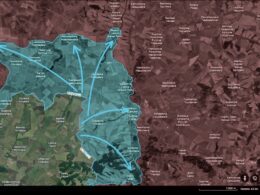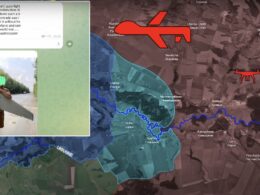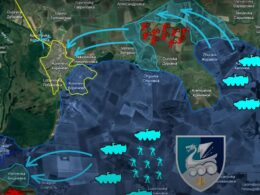15 August 2024. Today, there are a lot of developments in Russia's Kursk region.

As Ukrainians had penetrated deep into Russian territory, Russians transferred a large number of reserves to the area to respond to the quickly deteriorating situation.
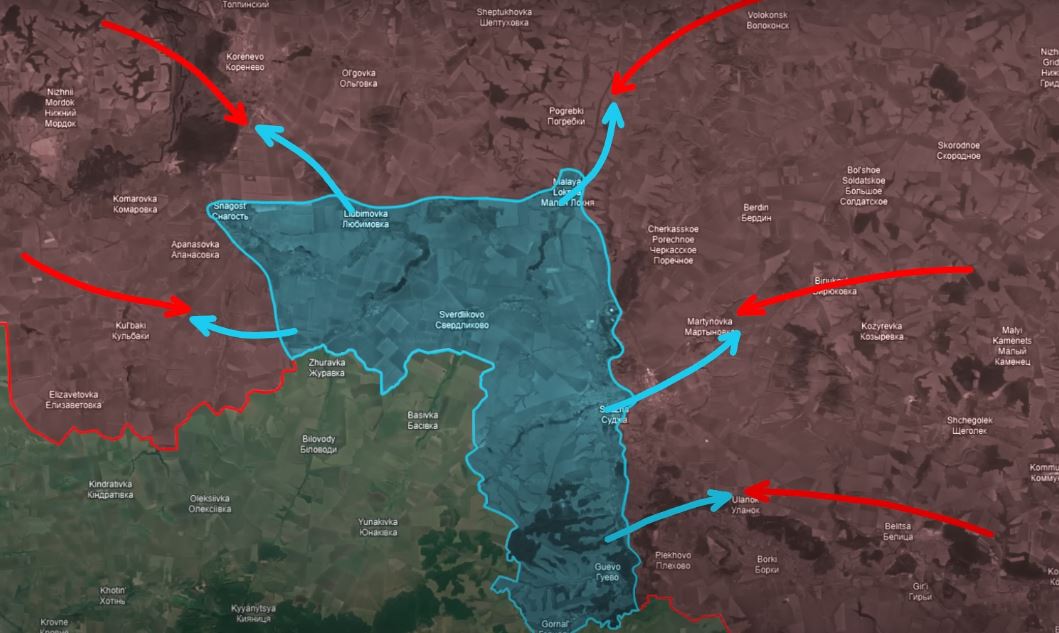
In response, Ukrainians used a genius tactic to delay these Russian reinforcements. Ukrainians, most of whom can speak Russian without accent, called up Russian civilians in the area, ordering them to evacuate by posing as Russian officials. This caused large traffic jams on the main roads Russians were using to transfer military equipment over, severely delaying the Russian response time to the quickly developing situation. Ukrainians also sent smaller reconnaissance groups far behind Russian lines to conduct ambushes, sabotage, and report on larger Russian troop movements before directing strikes to destroy the Russian convoys.

The Russian media even incidentally helped Ukrainians with this task, broadcasting live on troop movements in a media stunt to improve morale and hold up the façade that everything was under control.
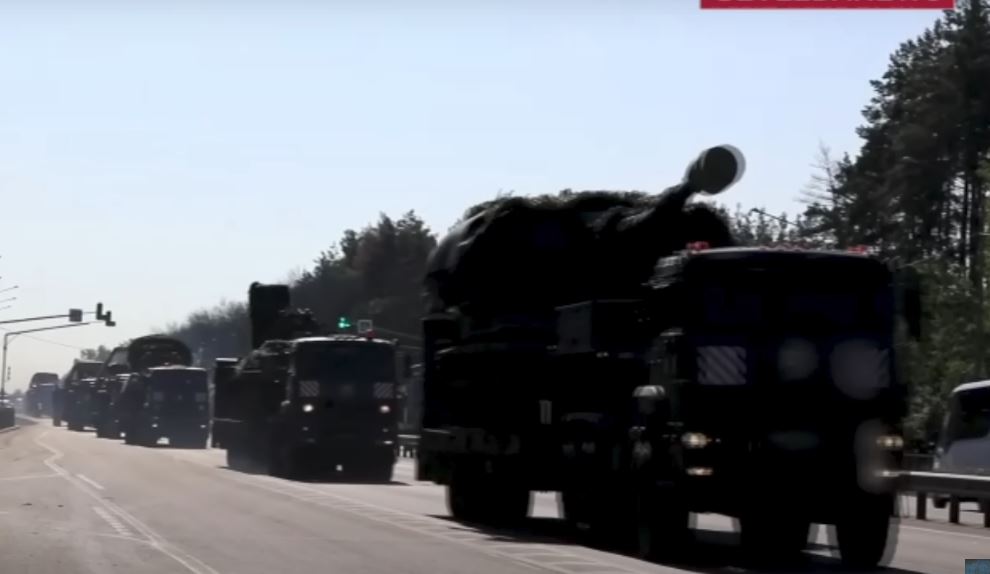
Russian military bloggers protested on masse, saying that this was one of the biggest problems in the Russian military, as the commanders continue to live in an illusion while ignoring reality, leading to disastrous consequences. Unfortunately for Russians, these military bloggers were right, as Ukrainians managed to identify major Russian logistic routes and forces concentrations meant to stop the Ukrainian advance.
https://twitter.com/EuromaidanPress/status/1821928166513901895/
Ukrainians later released footage of them hitting one of these convoys with a series of high-precision HIMARS strikes. Russian civilians who were evacuating the area recorded the aftermath of the strike, showing dozens of burnt-out or otherwise destroyed logistic trucks filled with hundreds of Russian troops.
https://twitter.com/EuromaidanPress/status/1821805489404919912/
The original uncensored footage of the Ukrainian HIMARS strikes and their aftermath can be found on Reporting From Ukraine's Telegram channel. Besides conscripts and emergency reserves, Russians also deployed Chechen Akhmat special forces to the area to help stabilize the region and dissuade Russian soldiers from surrendering.
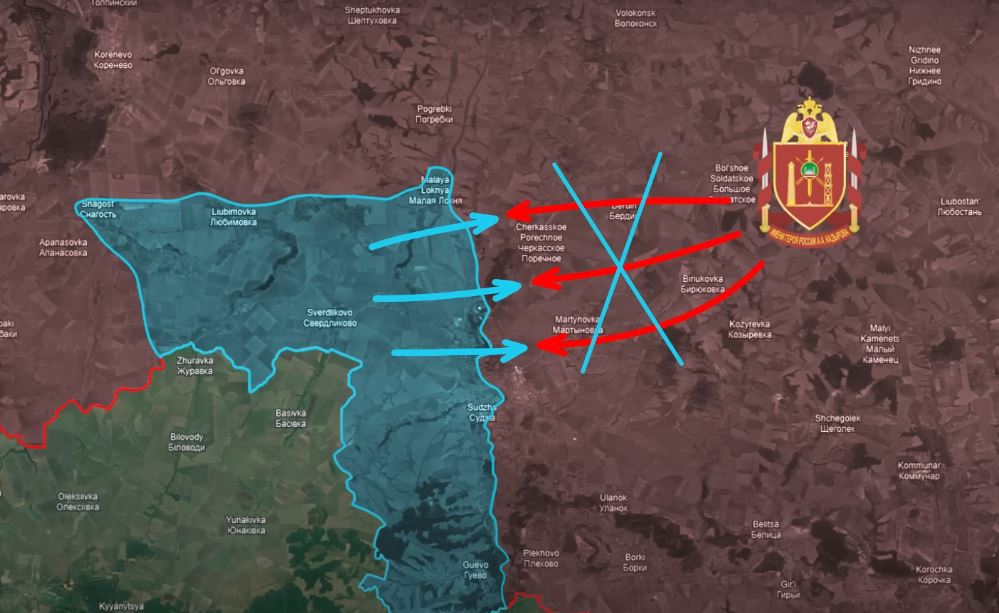
As it turns out, after Ukrainians defeated the initial Russian defenders, they went on to strike hard against the Chechen barrier troops. Russian soldiers then posted on Telegram how these Chechen units fled the battlefield as soon as they came under Ukrainian fire or immediately surrendered. These Russian whistleblower soldiers were, however, arrested by the Chechen units and forced to publicly state they were lying and praise the Akhmat soldiers.
Ukrainians, in turn, posted videos of having captured large numbers of these Chechen fighters, waiting for Ukrainian transport vehicles to take them into Ukraine. As Ukrainian sabotage groups effectively delayed many Russian reinforcements, the Russian lines remained thin, allowing Ukrainians to continue to push much deeper into the region. Russian forces shared geolocated footage of a failed Iskander ballistic missile strike on a Ukrainian armored assault group. However, the footage shows the missile had completely missed its target, leaving the only visible Ukrainian armored vehicle operational.

Russian sources state the Ukrainian assault group was operating in the area with over ten armored vehicles and had launched an attack on the settlement of Kachuk, indicating that Ukrainians had severely expanded their area of control northward. Next, the Russian Ministry of Defense stated that they were targeting Ukrainians with artillery, drones, and aviation above the Krepna River.
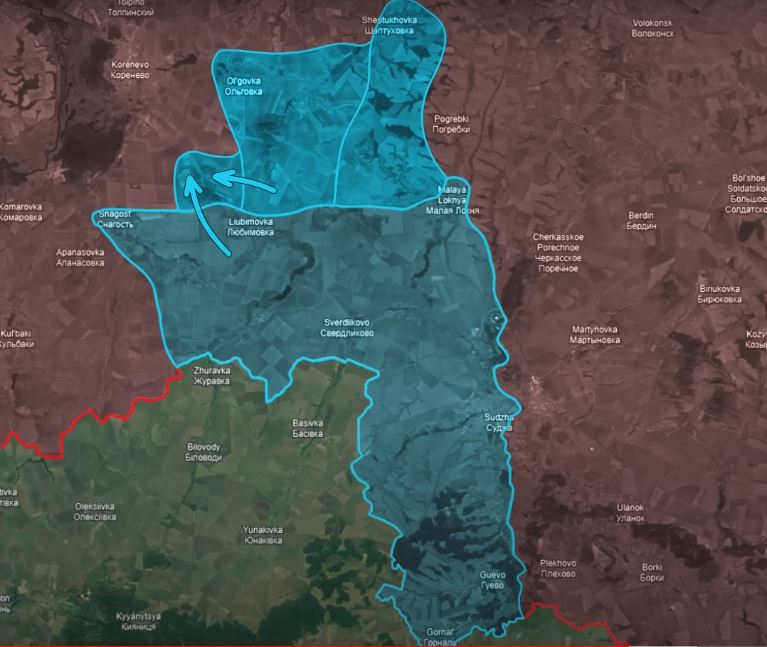
Russian sources also state that Ukrainians had taken control of the settlement of Olgovka. As Ukrainians had active assault groups operating above the river, Ukrainians have likely taken control over both crossing points over the river. Russians additionally state Ukrainians advanced in the forests northwest of Liubimovka. Ukrainians also launched a series of attacks toward the east, advancing toward Cherkasskoe Porechnoe and capturing the settlement. Russians conducted a series of Lancet drone strikes against Ukrainian armored vehicles here, destroying some but leaving the infantry intact to take up positions in the houses.
As you remember from the last report, Ukrainians took control over the western part of the Russian settlement of Sudzha. Yesterday, Ukrainians launched a pincer maneuver on the settlement to take the Russians into a pocket. Ukrainians launched a two-pronged attack in the north and crossed the river in the south.
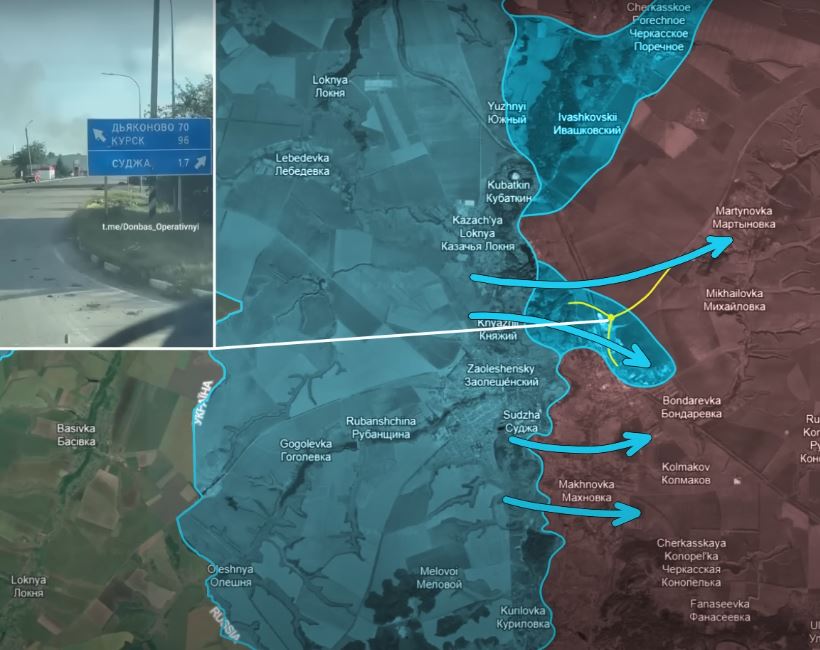
The latest geolocated footage shows that Ukrainians took complete control of the critical intersection northeast of the town and moved south into the settlement, freely traversing the roads here under no threat of Russian fire. This confirms that the offensive was successful, and Russians either retreated from the town or were encircled and taken captive. Both Russian and Ukrainian sources reported that Ukrainians had advanced along the border as well, consolidating control over the Guevo area, crossing the river, and taking the settlement of Plekhovo.
Ukrainians also continued to conduct reconnaissance operations deep behind Russian lines to the east to report on Russian troop movements and test the strength of Russian defenses here. Interestingly enough, Russian geolocated footage shows Ukrainian armored vehicles making it as far as 30 kilometers behind the Russian lines before they were stopped. This indicates that the Russian eastern flank is just as thinly manned as the locations where Ukrainians initially crossed the border, and that all available reserves in the area were transferred to the west in an attempt to stabilize the situation.
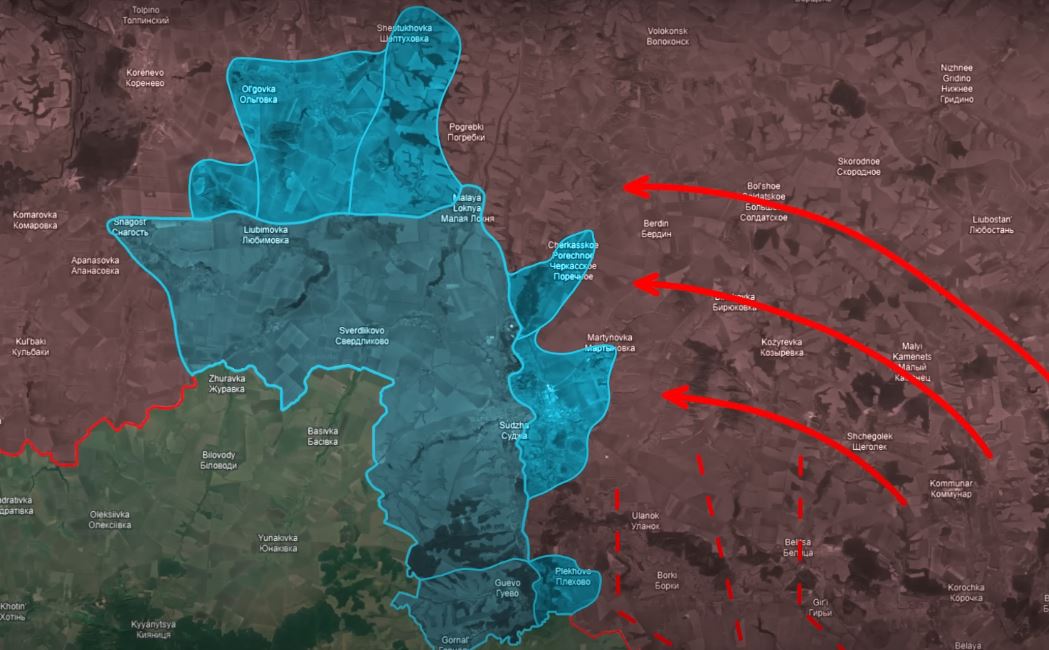
Overall, the tempo of the Ukrainian advance is not slowing down, as Ukrainians continue to reinforce their spearhead into the Kursk region. Ukrainians are actively looking for more weak spots by continuously testing Russian defenses, even getting as far as 30 kilometers behind Russian lines. These Ukrainian reconnaissance missions have exposed a considerable weakness in the Russian flanks, as these vast areas seem only to be lightly defended by only small groups of infantry.
With most, if not all, Russian reserves rushing toward the initial Ukrainian spearhead across the border and Ukrainians still holding many forces in reserve, we will likely see more Ukrainian incursions, further stretching out the already thin Russian frontline.
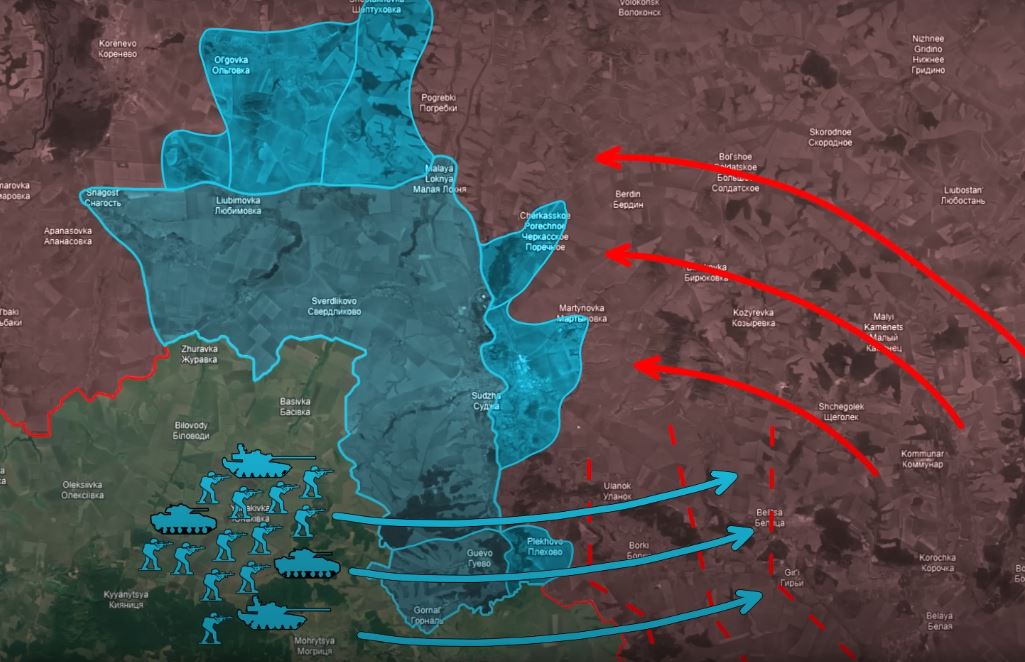
In our regular frontline report, we pair up with the military blogger Reporting from Ukraine to keep you informed about what is happening on the battlefield in the Russo-Ukrainian war.


